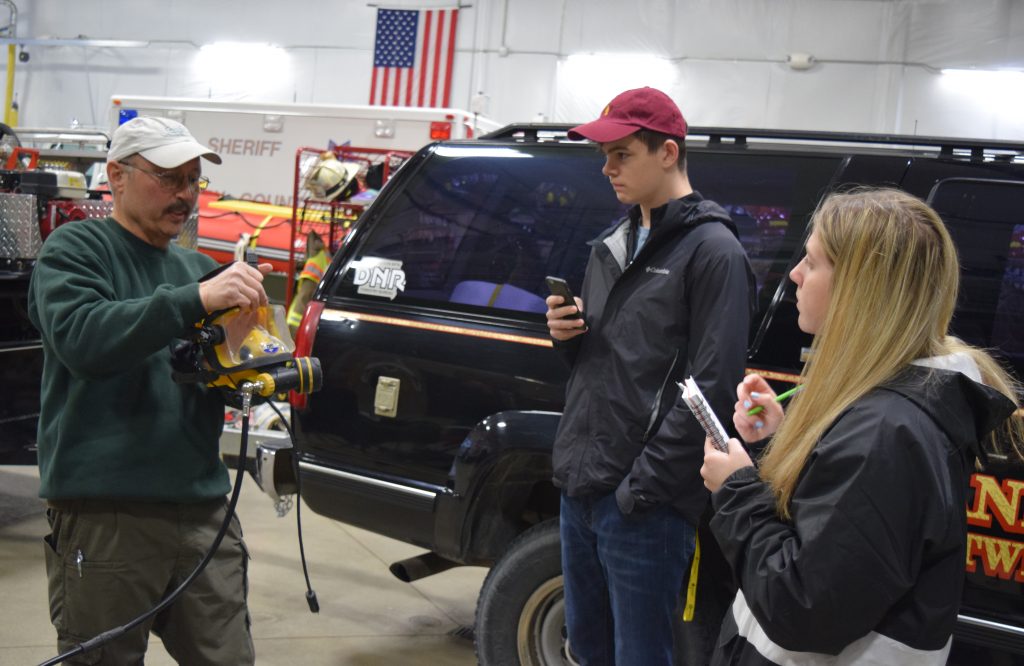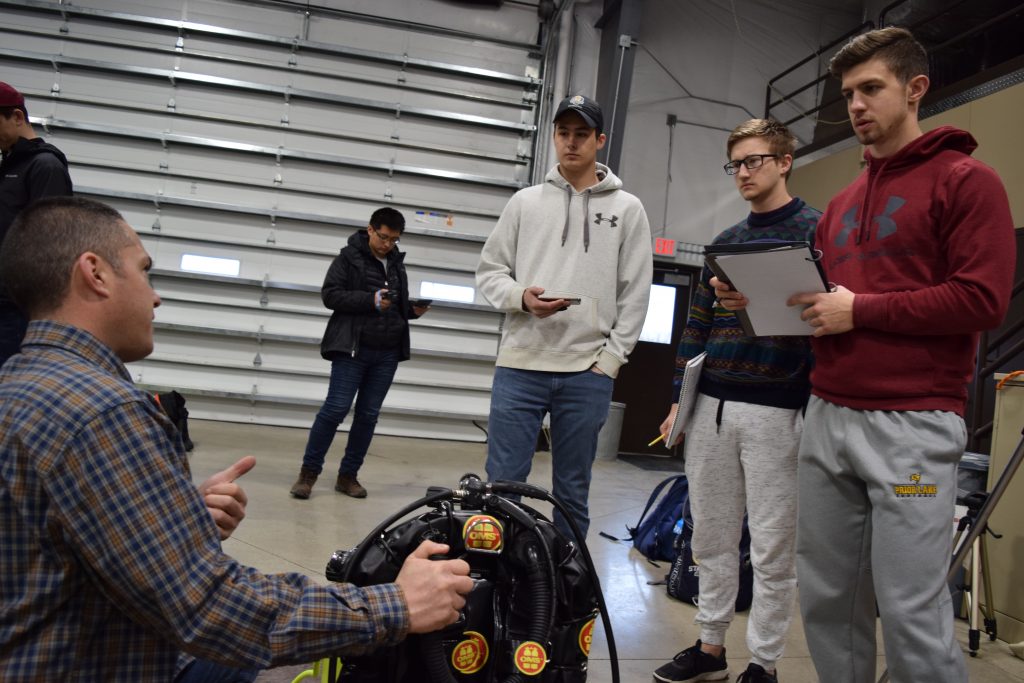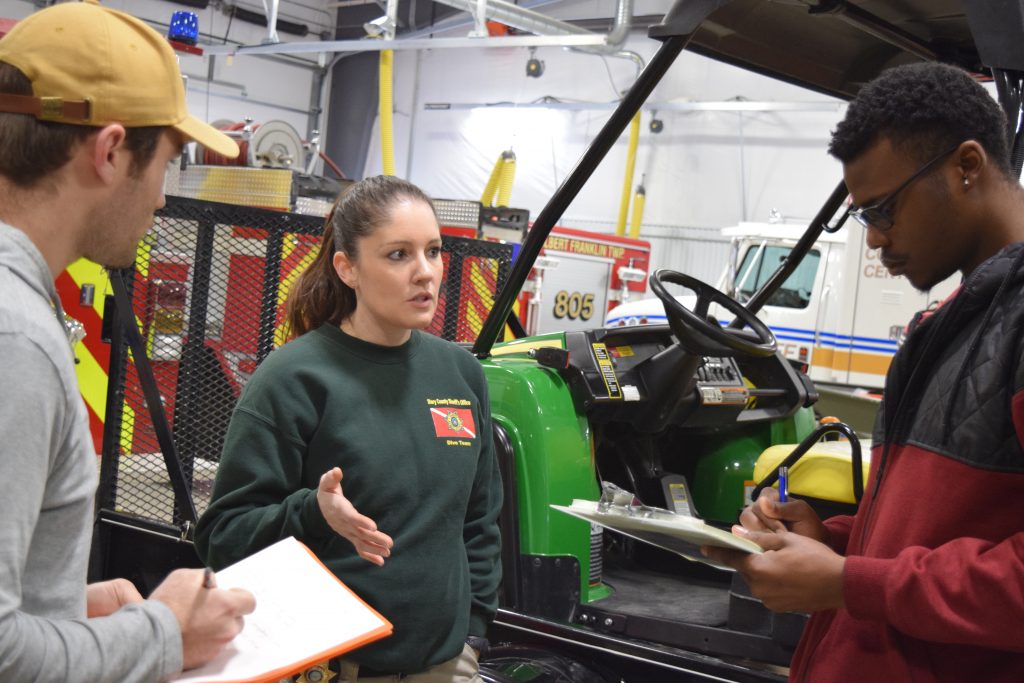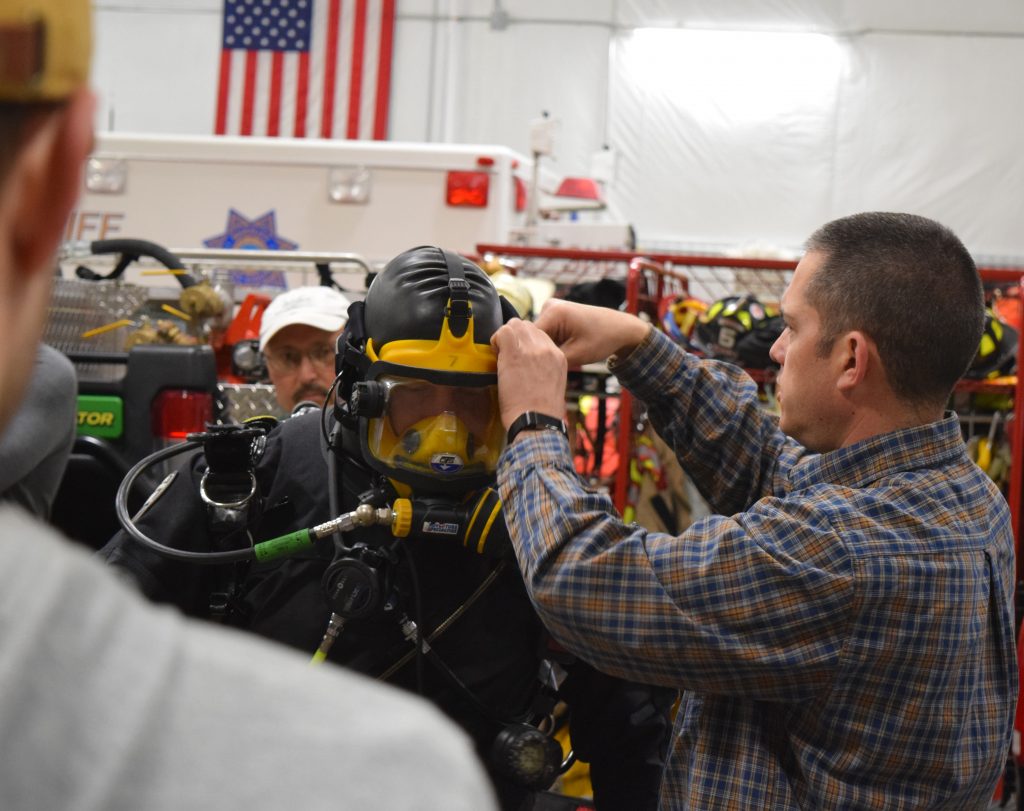
Students taking IE 271: Applied Ergonomics and Work Design this semester had the opportunity to learn first-hand about ways they can apply their engineering skills to real world situations.

On March 5th, industrial and manufacturing systems engineering (IMSE) associate professor Rick Stone’s IE 271 course spent a day at the Gilbert-Franklin Township Fire Station, just north of Ames, to learn about how they can take concepts from the curriculum and apply it to rescue operations.
“We’re here with the dive team today and the students are gathering real world information to actually apply good engineering techniques and design to actual problems and applications,” said Stone, who also serves as a Reserve Deputy for the Story County Sheriff’s Office and is part of the sheriff’s dive team.

Students asked questions and took notes about the logistics of performing rescue operations, especially when the dive team is called upon. Students were also encouraged to use their smartphones and other tools readily available to them to document – through photos and videos – the demonstrations throughout the day.
Stone, who also has a courtesy appointment in mechanical engineering, said that the trip to the fire station helps to contribute to Iowa State’s mission as a land grant university.
“Especially at a land grant institution like Iowa State, a big part of our mission is to give back to Iowa and I think that we’re helping to do that,” Stone said. “So today we’re looking at how long it actually takes to get a response to people out in the water. We are looking at how do we shave time off of these techniques? How do we do it more efficiently? How can we take engineering techniques into this world of rescue?”

Time study, micro analysis, ergonomic analysis, tool selection, and design analysis were some of the techniques that the students learned about throughout the semester and applied to this project. Stone said he thinks it’s beneficial to his students to be able to see the practical applications of the content they cover in the classroom.
“The students learn to apply these concepts to real-world problems and that’s just what this trip to the fire station illustrates. It’s a real-world problem that goes beyond just let’s make a profit to let’s potentially help to save a life.”